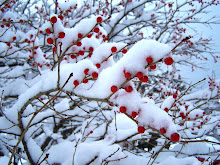Bogs are a wetland, kind of like a floating sponge. Sphagnum moss is what makes up the sponge and provides a place for flowering plants and trees to spread roots. I’ve heard #’s of acres for the Carmi bog’s size between 160 and 230 acres. A bog is a type of peatland. Peatlands form where decomposition is slow and typically moss (peat) accumulates.
New layers of moss, shrubs, and trees grow where other plants have died and been pushed further down underwater into the peat. The bog is a sterile environment where no bacteria grows and nothing breaks down because of the acidity of the water. The sphagnum moss in the bog gets its nutrients from rainfall, which it replaces with hydrogen ions giving the water its acidity.
The Lake Carmi Bog was formed in a shallow bay of the lake after the last ice age 10,000 years ago. The bog at Lake Carmi is a state natural area, and is classified as a black spruce woodland bog. Named for the dominant older growth vegetation, these trees inhabit cold air drainage sites like the bog, and our highest peaks, such as the krummholz on Mount Mansfield. The discoloration of the water in bogs is tannins that together with the acidity preserve most anything that goes into a bog.
Ancient peoples have been found preserved in Europe, and a book from 1000 AD was recently discovered in Ireland. Peat harvested from bogs is used as fuel in Ireland still, and to fire electrical plants in Russia. The Canadians drain and chop bogs to be sold in the USA as peat moss for the horticulture industry. The reason that a woodland bog is the safest to walk in, is there are so many trees and shrubs that have overlapping root systems to support the weight.
In the Lake Carmi bog are carnivorous pitcher plants. Because the bog is so nutrient poor, this plant has adapted to feeding on bugs to get the energy it needs to produce flowers. Two berries also in this bog, are high bush blueberry, and small cranberry. The two tree species are Black Spruce (looks like x-mas tree) and Tamarack. There is also heath, rhodora, Labrador tea, sheep laurel, bog rosemary, and hares tail cotton grass.
Major threats to the bog both relate to a changing water table. If a beaver were to dam and flood the bog it would alter the environment. If the bog were drained, or water level to drop, it is at risk of fire as the dried peat will smolder. One of a peatlands most important functions is to store rainfall and slowly release water into the watershed. There has been recent work with using peat lands to treat wastewater.




2 comments:
Neat stuff. I bird hunted in there once - too wet, too thick. Too, well, boggy,
Very interesting website. Sure am glad Matt got out of the Franklin Bog safely . I 've heard bodies can be preserved over 5,000 years !.
Post a Comment